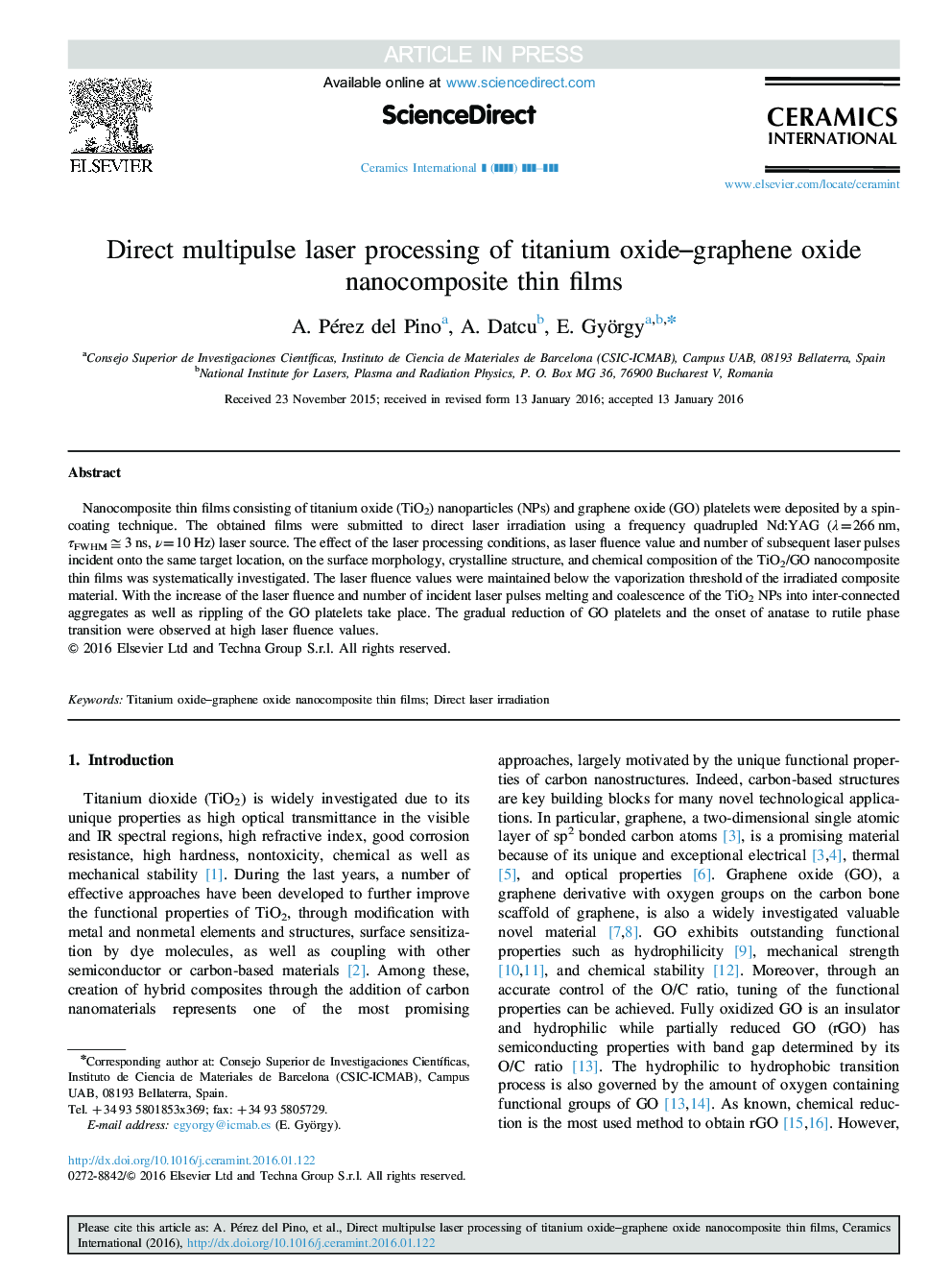| Article ID | Journal | Published Year | Pages | File Type |
|---|---|---|---|---|
| 10624311 | Ceramics International | 2016 | 6 Pages |
Abstract
Nanocomposite thin films consisting of titanium oxide (TiO2) nanoparticles (NPs) and graphene oxide (GO) platelets were deposited by a spin-coating technique. The obtained films were submitted to direct laser irradiation using a frequency quadrupled Nd:YAG (λ=266 nm, ÏFWHMâ
3 ns, ν=10 Hz) laser source. The effect of the laser processing conditions, as laser fluence value and number of subsequent laser pulses incident onto the same target location, on the surface morphology, crystalline structure, and chemical composition of the TiO2/GO nanocomposite thin films was systematically investigated. The laser fluence values were maintained below the vaporization threshold of the irradiated composite material. With the increase of the laser fluence and number of incident laser pulses melting and coalescence of the TiO2 NPs into inter-connected aggregates as well as rippling of the GO platelets take place. The gradual reduction of GO platelets and the onset of anatase to rutile phase transition were observed at high laser fluence values.
Related Topics
Physical Sciences and Engineering
Materials Science
Ceramics and Composites
Authors
A. Pérez del Pino, A. Datcu, E. György,
